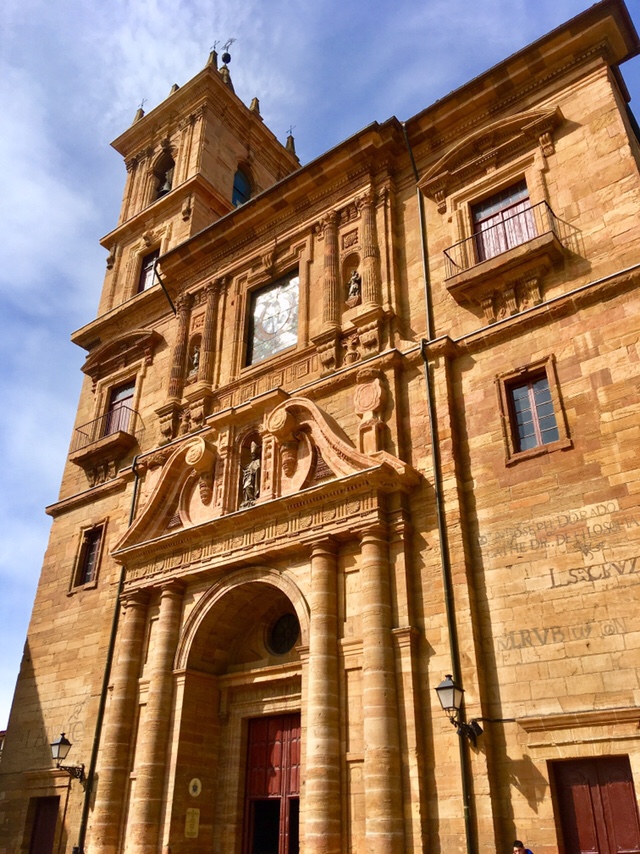April 5, 3018
Today dawned beautiful and sunny and not only was it a wonderful start to the day, also I could not help but have my mood lifted and my optimism regained! We had a leisurely morning and a variety of breakfasts, and then we headed out together to the beautiful Cathedral in town that we see from our kitchen window. It is was a sight to behold.

Founded in 757 by Fruela I as a fortress to guard the central road linking the coast to the interior, the town of Oviedo became the capital of Christian Spain a half century later when “pious” King Alfonso II El Casto (“The Strong”) built his palace here. The construction of the Cathedral of San Salvador spanned eight centuries, consequently combining a broad range of architectural styles ranging from Gothic to Baroque.
King Alfonso II was the first pilgrim to Compostela walking the El Camino de Santiago de Compostela from here in Oviedo. This is the staring point of the original Camino, “The Primitivo” which we begin walking tomorrow!! King Alfonso II was also the promoter of “The Way of Saint James” and ordered construction of the cathedral in Compostela de Santiago in which to guard the newly discovered tomb of Apostle St James during his era.
According to the website, catedraldeoviedo.com, “The architecture is supposed to express symbolically, the will of God that dwells in the heart of man and that is manifested by an impulse toward infinity, expressed in an upward volumetric trend. The cathedral is the image of the heavenly Jerusalem, which is spoken of in the book of Revelation: the heavenly city whose gates are defended by powerful towers and which descends beside God as like a bride adorned for her husband. In Christian tradition, Christ is always the husband and the church his wife”

Oviedo is also a modern and University City, one of congresses, celebrations and gastronomy.
Buildings in Oviedo’s center: Palace of The Ruía (XV century), The chapel of La Balesquida (XVII century), The Palace of Valdecarzana and Heredia (XVII century), The Baroque Building of Los Llanes (18th century) and The Notarial College of Asturias (18th century).
Oviedo is also home to three pre-Romanesque churches, identified by UNESCO as the finest examples of ninth century Christian European architecture. San Julian de los Prados is the largest and most central, built during Alfonso II’s reign. Santa Marìa de Naranco is nearly perfectly preserved. Only 1/3 of San Miguel de Lilo survives, but the Visigothic influence of architecture is evident.

Everyone in our group – ten total – split five (my gang) and four, enjoyed the sunshine in a number of ways, descended upon our Airbnb for a lengthy lunch, and then hung out doing various activities to enjoy our last conveniences of a modern dwelling. We will break bread together tonight in town, share our intentions, and hopefully get a good rest before we head out on day one of our official Camino!!!
Those last three photos are of our Airbnb.




















Leave a Reply